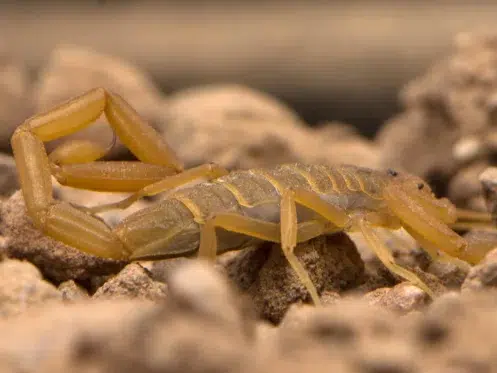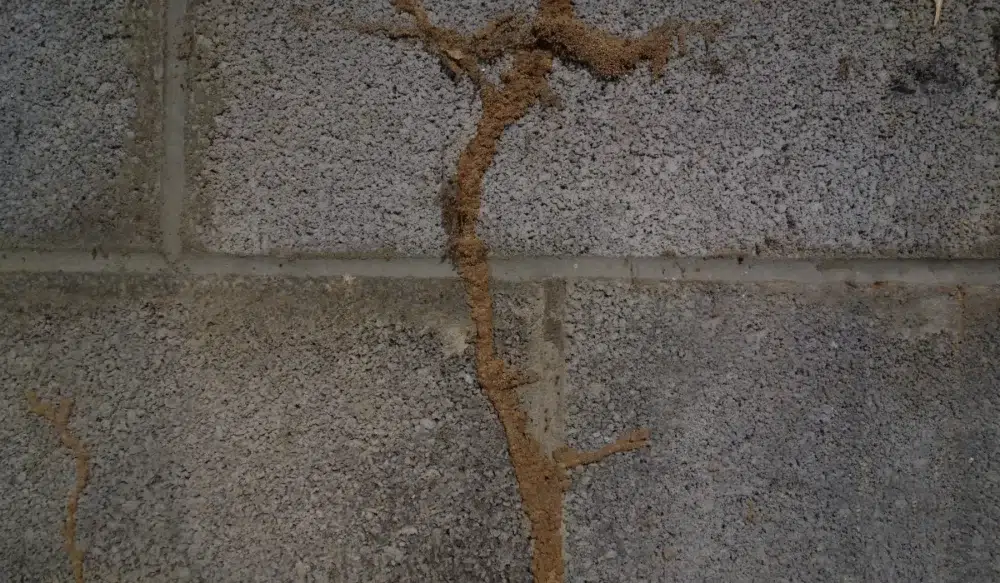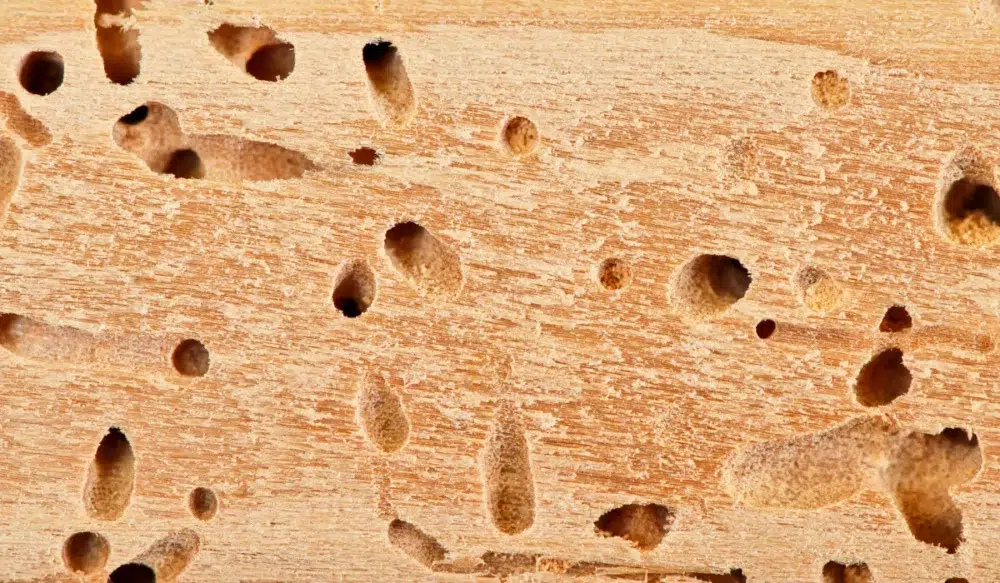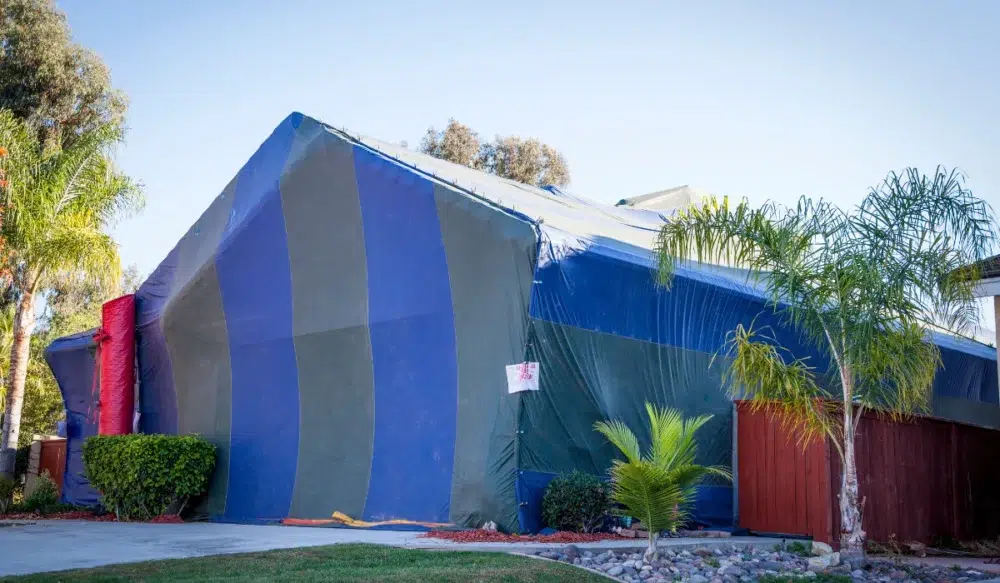Living in Arizona means you share your environment with all kinds of desert-dwelling creatures, including scorpions. These venomous arachnids have adapted remarkably well to our harsh climate, using their exoskeleton to retain moisture and their venomous stinger to hunt.
If you’ve spotted one lurking around your home, your first question is probably, “What do scorpions eat?”
Key Takeaways
- Scorpions in Arizona eat crickets, cockroaches, termites, centipedes, grasshoppers, tarantulas, and sometimes even each other.
- Their diet depends on what is available, which makes Arizona homes with bugs an easy target for feeding.
- Small cracks, moisture, clutter, and outdoor lighting attract both insects and scorpions into yards and homes.
- Local pest control removes scorpions and their food to prevent infestations and protect your home long term.
What’s in a Scorpion’s Diet?
Scorpions are nocturnal carnivores that hunt smaller invertebrates. Their survival in Arizona’s unforgiving ecosystem is all about adaptability. They eat what’s available.
But even though their diet is broad, they have favorites.
Crickets
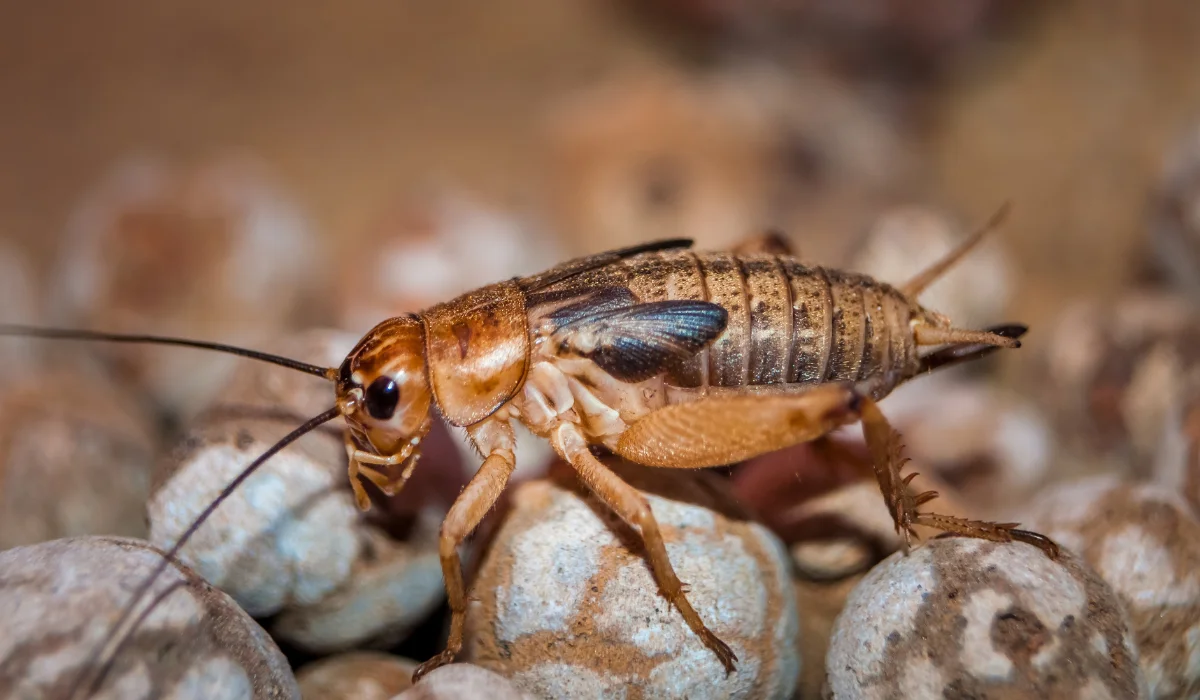
Scorpions love crickets, especially in suburban Phoenix and Tucson, where these insects are attracted to landscaping and porch lights.
Using pedipalps (pincer-like arms) and sharp chelicerae (mouthparts) to capture and tear food, scorpions grab hold and inject prey with scorpion venom, paralyzing them before feeding.
Cockroaches
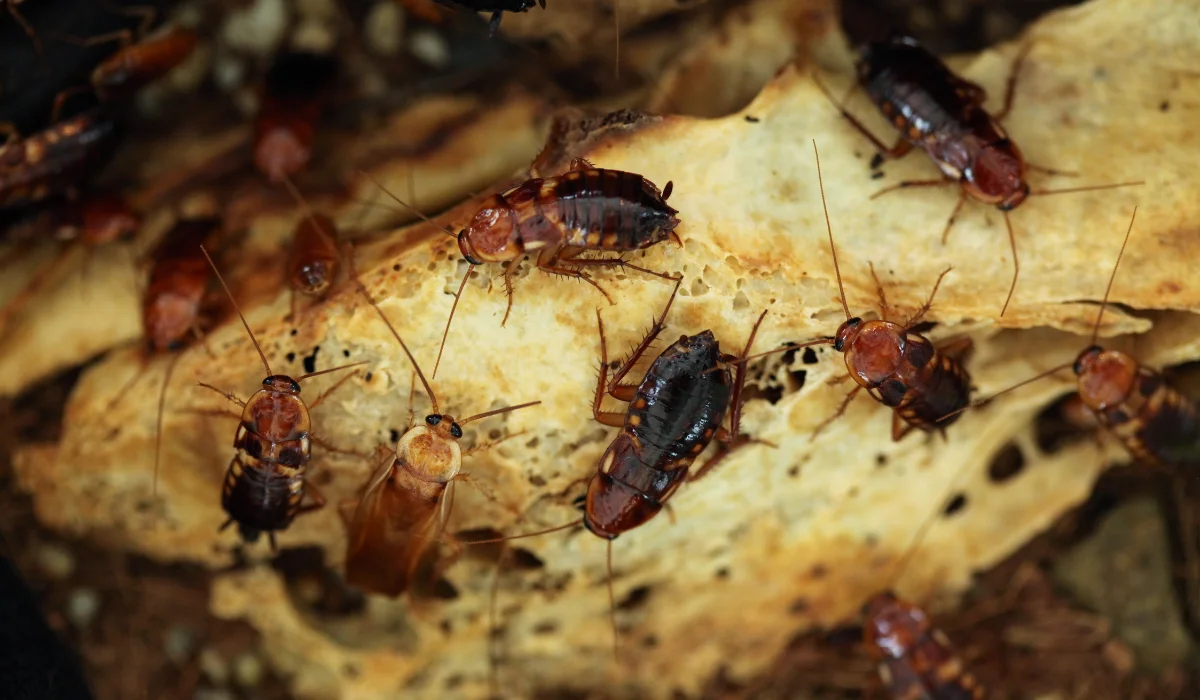
It might sound redundant, but let’s be clear, scorpions aren’t picky.
They’ll eat American, brown-banded, and Oriental cockroaches, the same ones often found in kitchens or bathrooms. Cockroaches are high in protein and easy to find, making them a reliable food source.
The more bugs you have, the more attractive your home becomes to scorpions.
Termites
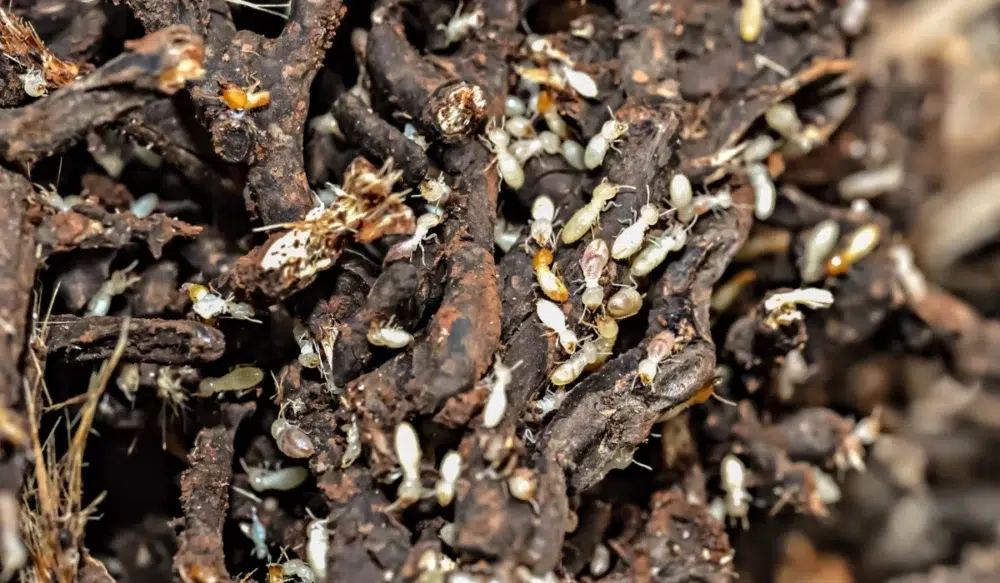
Don’t assume termites only mean damage to your home’s structure.
In Arizona, they also draw predators like the bark scorpion, our most common and dangerous type of scorpion. These invaders follow the trail of termites into wall voids and under flooring.
Centipedes and Other Arthropods
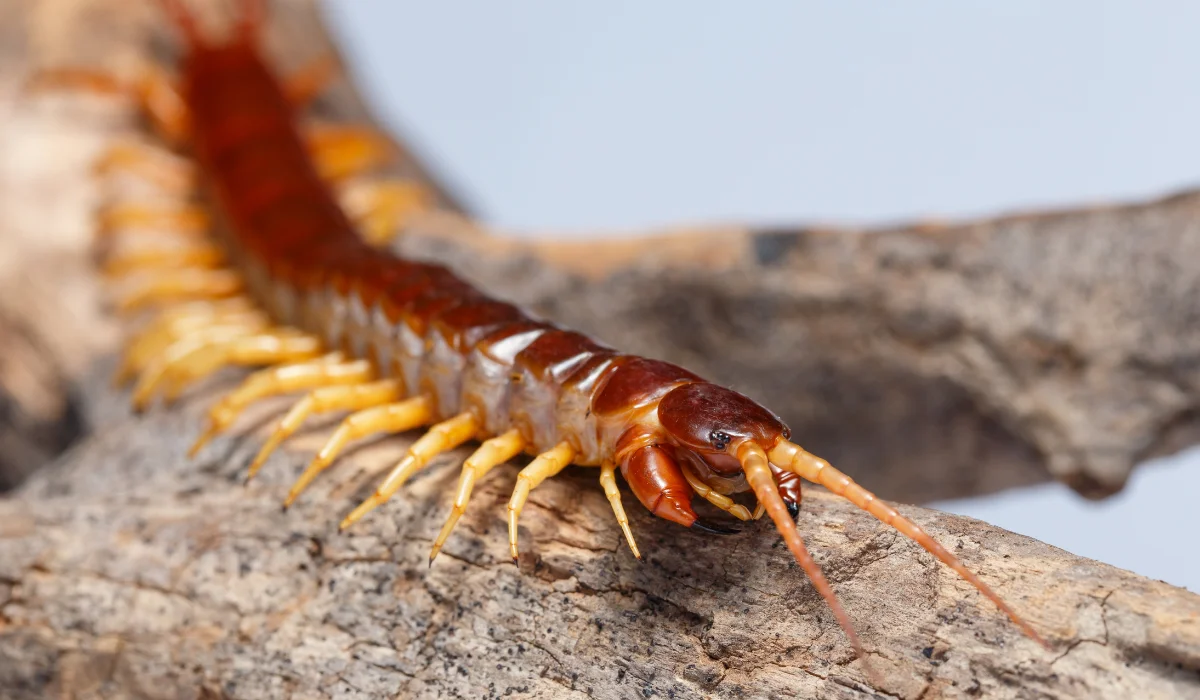
Scorpions often eat other arthropods, especially centipedes, which are aggressive enough to fight back. These encounters can be intense, and it’s not uncommon to see scorpions with missing legs after a fight.
If they win, it’s dinner. If not, they risk becoming prey themselves.
Grasshoppers
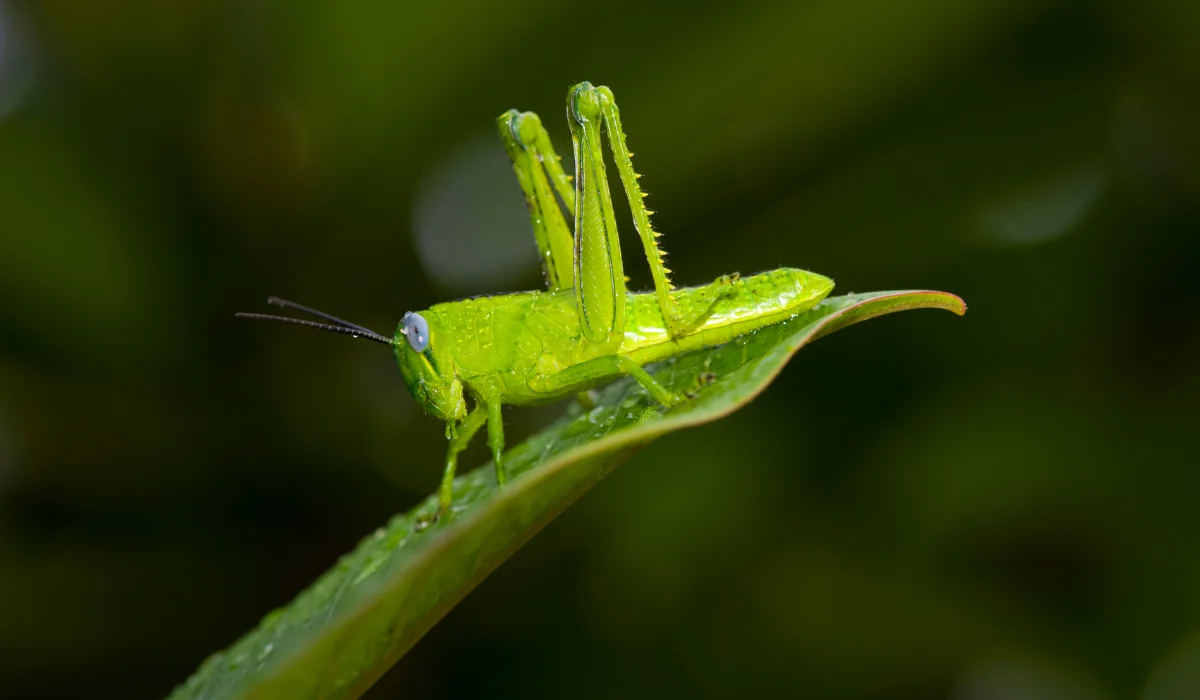
Especially in grassy or semi-rural properties, grasshoppers can attract scorpions. While these insects are harder to catch due to their quick jumping ability, they’re still worth the effort for a high-protein meal.
In parts of the Valley with larger lots or nearby desert terrain, this prey becomes a frequent item on the menu.
Baby Scorpions
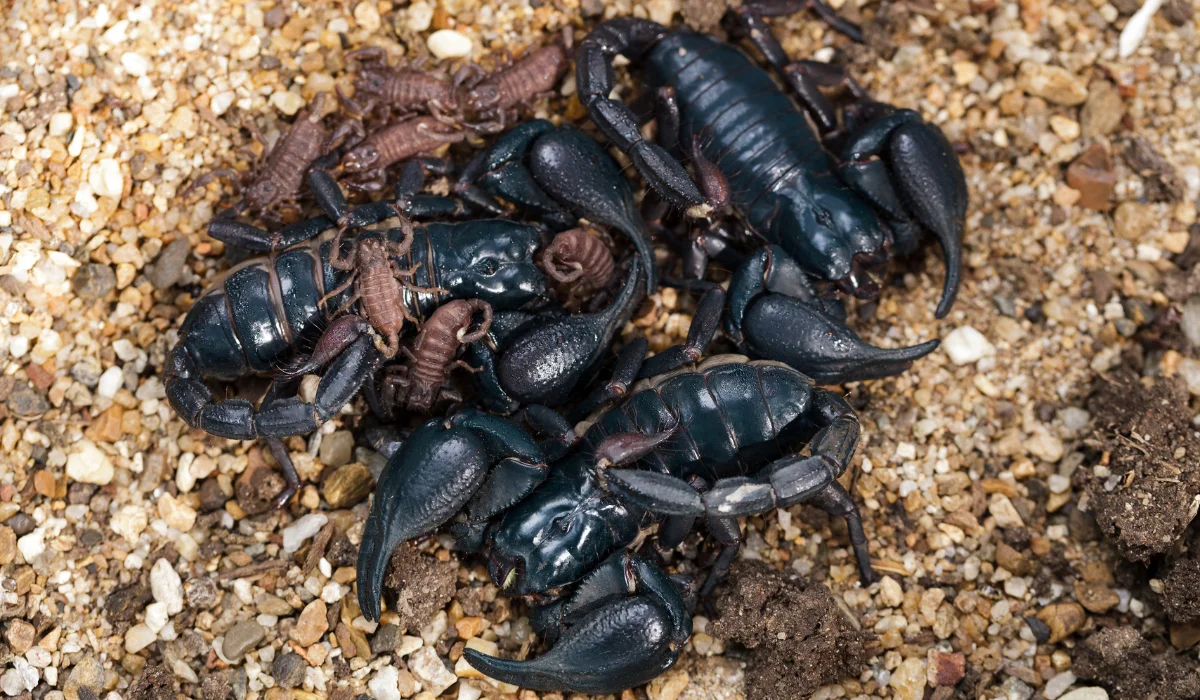
Yes, baby scorpions can be part of the diet, especially after a molt. The soft, freshly molted individuals are vulnerable to cannibalism, particularly in times of food scarcity. Mothers may eat their young, or siblings may turn on each other.
It’s brutal, but it’s how they manage when prey is limited.
Tarantulas and Other Scorpions

Believe it or not, tarantulas will occasionally eat scorpions, and vice versa. While most scorpions are prey in this matchup, larger species of scorpions, like emperor scorpions (though not native), can hold their own in a fight.
This also happens among local species—territorial disputes or overcrowding often result in one scorpion eating another.
How to Keep Scorpions and Their Food Out of Your Home
Cutting off access to a scorpion’s food is the first step toward preventing a scorpion infestation. Here’s how to reduce risk effectively.
Scorpions don’t just wander into your home randomly, they follow their food. Here’s a side-by-side look at what brings insects (their food) and what brings scorpions.
| What Attracts Insects | What Attracts Scorpions |
|---|---|
| Outdoor lighting (white/blue bulbs) | Areas with lots of insect activity |
| Moisture (leaks, overwatering) | Moisture sources like AC lines |
| Food crumbs and organic debris | Cluttered areas with hiding spots |
| Yard debris and woodpiles | Same—used for both food and shelter |
| Warmth from structures | Cracks and crevices near warm areas |
Eliminate Insects
Treating for crickets, cockroaches, and termites isn’t just about controlling those pests. It’s also a form of scorpion control. When their prey disappears, scorpions have no reason to stick around.
Green Home’s pest control services are designed with this in mind: we don’t just treat scorpions; we remove what keeps them coming back.
Seal Off Entry Points
Arizona homes, especially in older neighborhoods, often have gaps and crevices where scorpions sneak in. Whether it’s around pipes, under door sweeps, or through cracks in foundations, these tight spaces are perfect hiding spots.
Sealing these gaps helps block access to your home and the food inside it.
Reduce Moisture and Shelter
Even desert creatures need water.
Scorpions are drawn to leaky outdoor faucets, overwatered lawns, or AC condensation lines. Fixing these problems helps reduce both the scorpions and the bugs they eat.
Yard debris, stacked firewood, and even kids’ toys provide shelter. Removing these hot spots goes a long way.
Lighting Adjustments
Insects are attracted to outdoor lights, especially whites or blues.
Where insects go, scorpions follow. Switching to yellow or sodium vapor bulbs can reduce insect activity—and, in turn, reduce scorpion activity too.
Schedule Local Pest Control
If you’re seeing scorpions—or even just the bugs they eat—then it’s time to call in professionals who know the unique pest ecosystem.
At Green Home Pest Control, we target all three. Whether it’s termites in the walls, roaches under the sink, or crickets in the garage, our team knows how to cut off access and reclaim your home.
Dealing with scorpions isn’t just about avoiding Arizona bark scorpion stings or controlling a few bugs. It’s about protecting your family, your pets, and your peace of mind.
Need help keeping scorpions out? Contact Green Home Pest Control for expert, Arizona-focused solutions.
